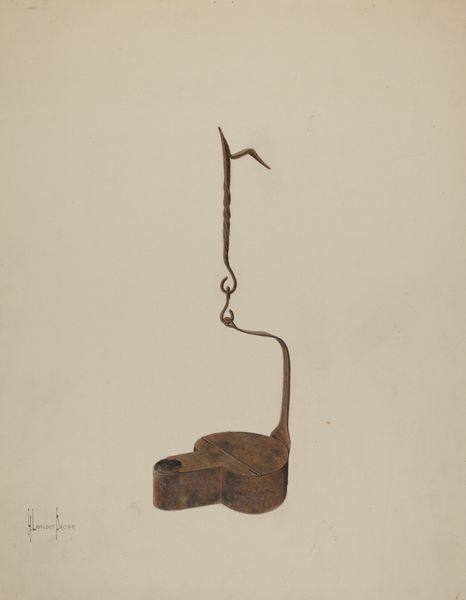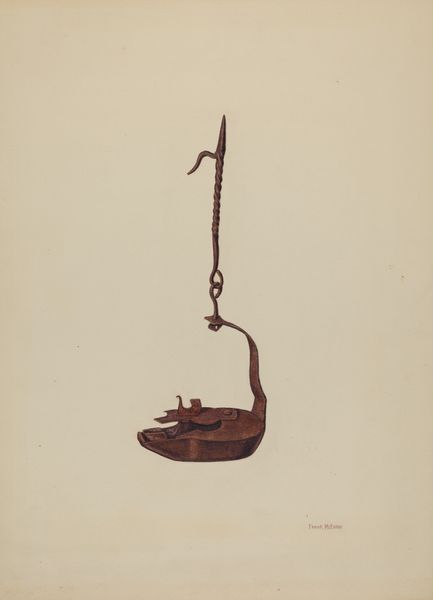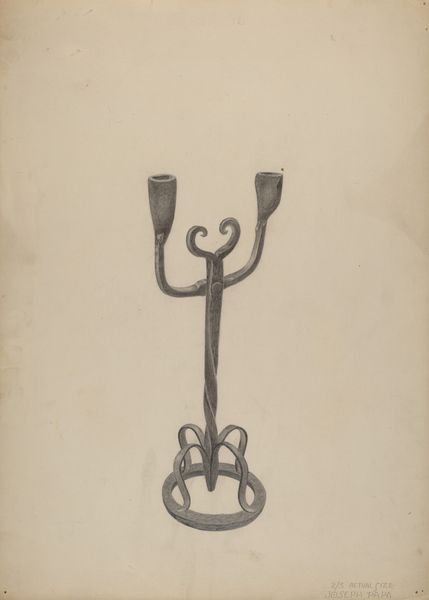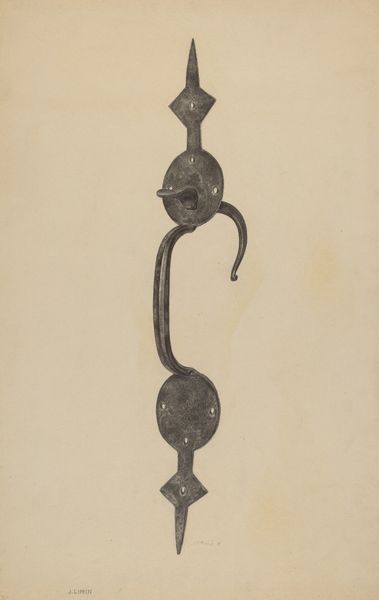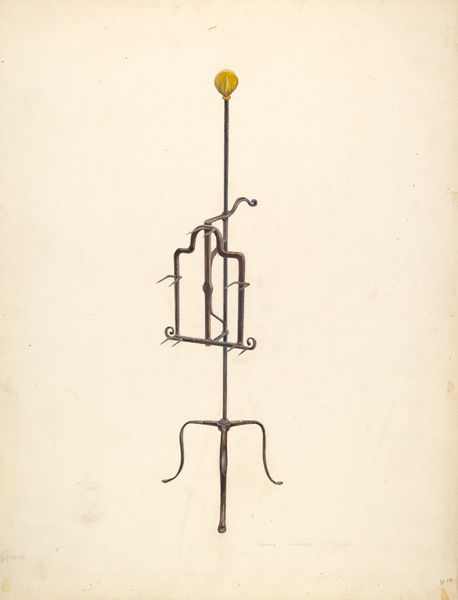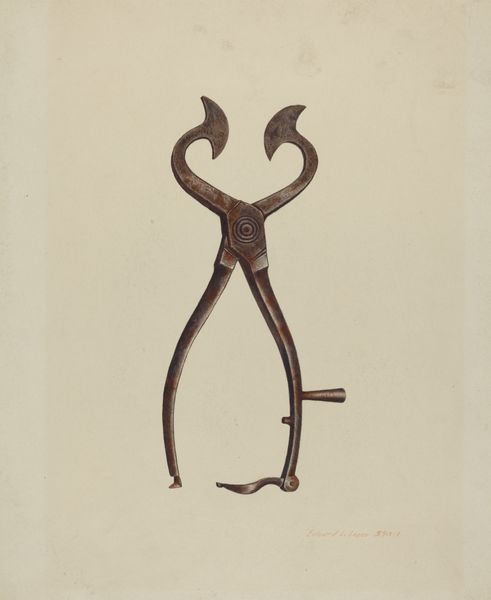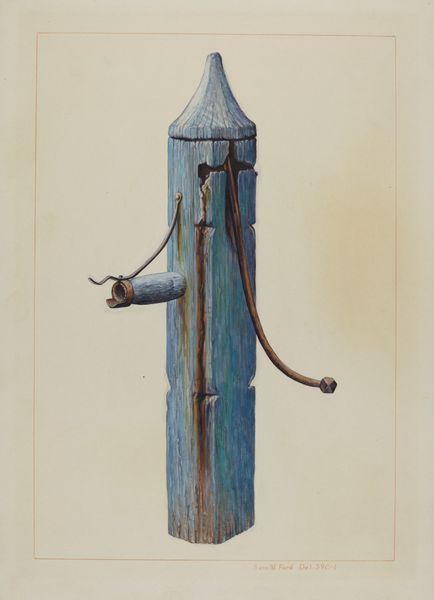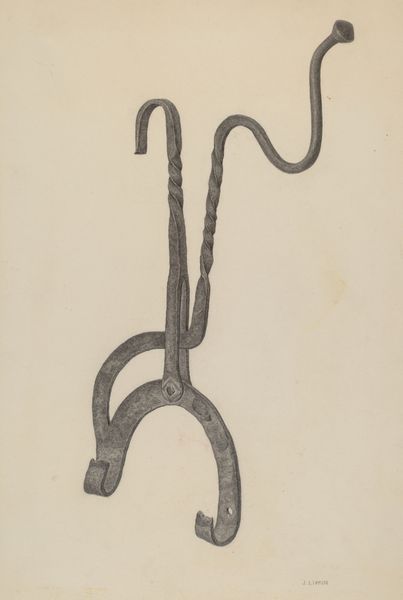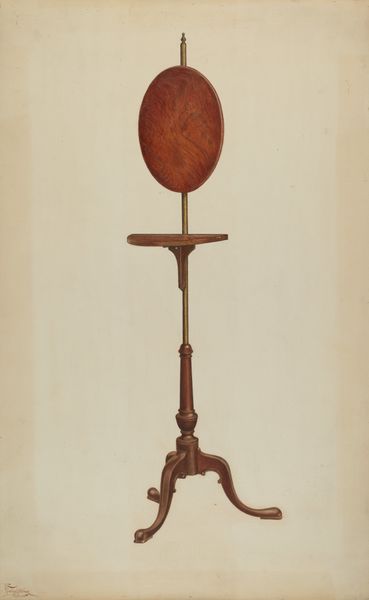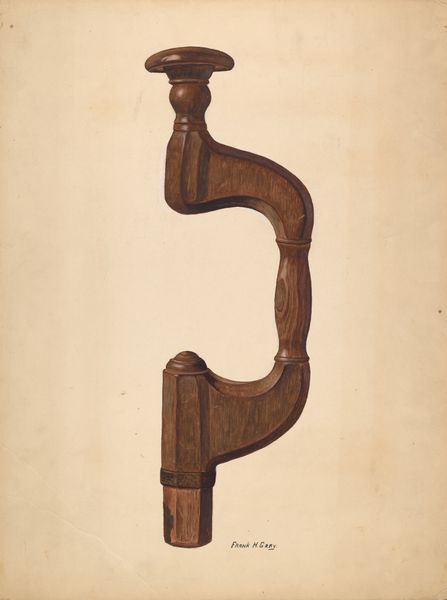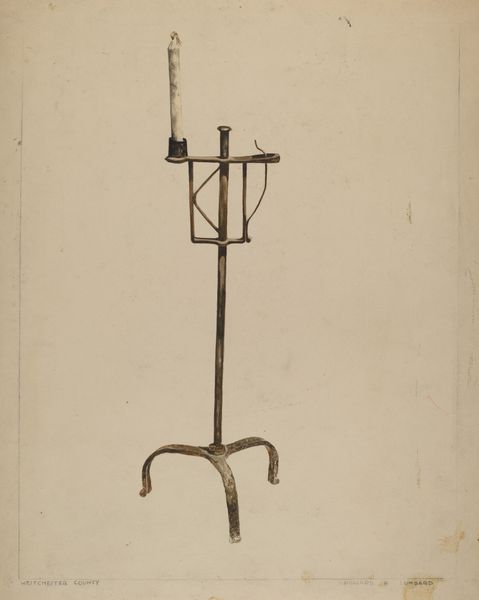
drawing, watercolor
#
drawing
#
watercolor
#
pencil drawing
#
academic-art
#
modernism
#
watercolor
#
realism
Dimensions: overall: 56.2 x 45.8 cm (22 1/8 x 18 1/16 in.)
Copyright: National Gallery of Art: CC0 1.0
Curator: This drawing, “Spiral Hay Fork,” was rendered in watercolor by Oscar Bluhme around 1941. Editor: It's striking! Stark, almost lonely, yet incredibly precise. The color palette is quite muted. Curator: Bluhme's works, often categorized under modernism and realism, explored the intersection between agricultural landscapes and human intervention. Looking at the depicted hay fork in its formal qualities, and knowing that it depicts a common tool in a certain moment, it could tell us a lot about social and working life in 1940's America. Editor: Absolutely, that's intriguing. It could reflect rural identities and the economic disparities in those areas at the time, since technologies like this impact people's working day. Are we seeing farm machinery presented as art, inviting us to contemplate the labor it represents and its relationship to the individuals using the it? Curator: Precisely! And think of how he uses watercolor to convey the material essence of the metallic implement – its texture, its potential for rust. Notice how, in comparison, the farmer, hay stack and tools behind it appear minuscule in comparison. Editor: It certainly appears imposing. It begs the question of agency. Are humans commanding tools, or the other way around? The single drawing suggests isolation; are we missing, in other words, a sense of collective labor, social connections, or support? Curator: It also compels me to question its purpose beyond sheer artistic endeavor, potentially alluding to the profound changes occurring in agricultural practices during that era. How technology reshapes how individuals engaged with the world. Editor: And I find myself drawn to the implications surrounding the representation of rurality in the face of modernity. What did it mean to portray agricultural tools amidst industrial expansion and social transformations? It would be fascinating to consider how contemporary audiences interpret that image as a mirror to today's anxieties surrounding technology, labor, and power dynamics. Curator: It does leave me pondering whether we romanticize tools like these – we’ve become detached from the tactile labor it suggests. Bluhme's artwork offers us space to really think about those historical transitions. Editor: I completely agree.
Comments
No comments
Be the first to comment and join the conversation on the ultimate creative platform.

